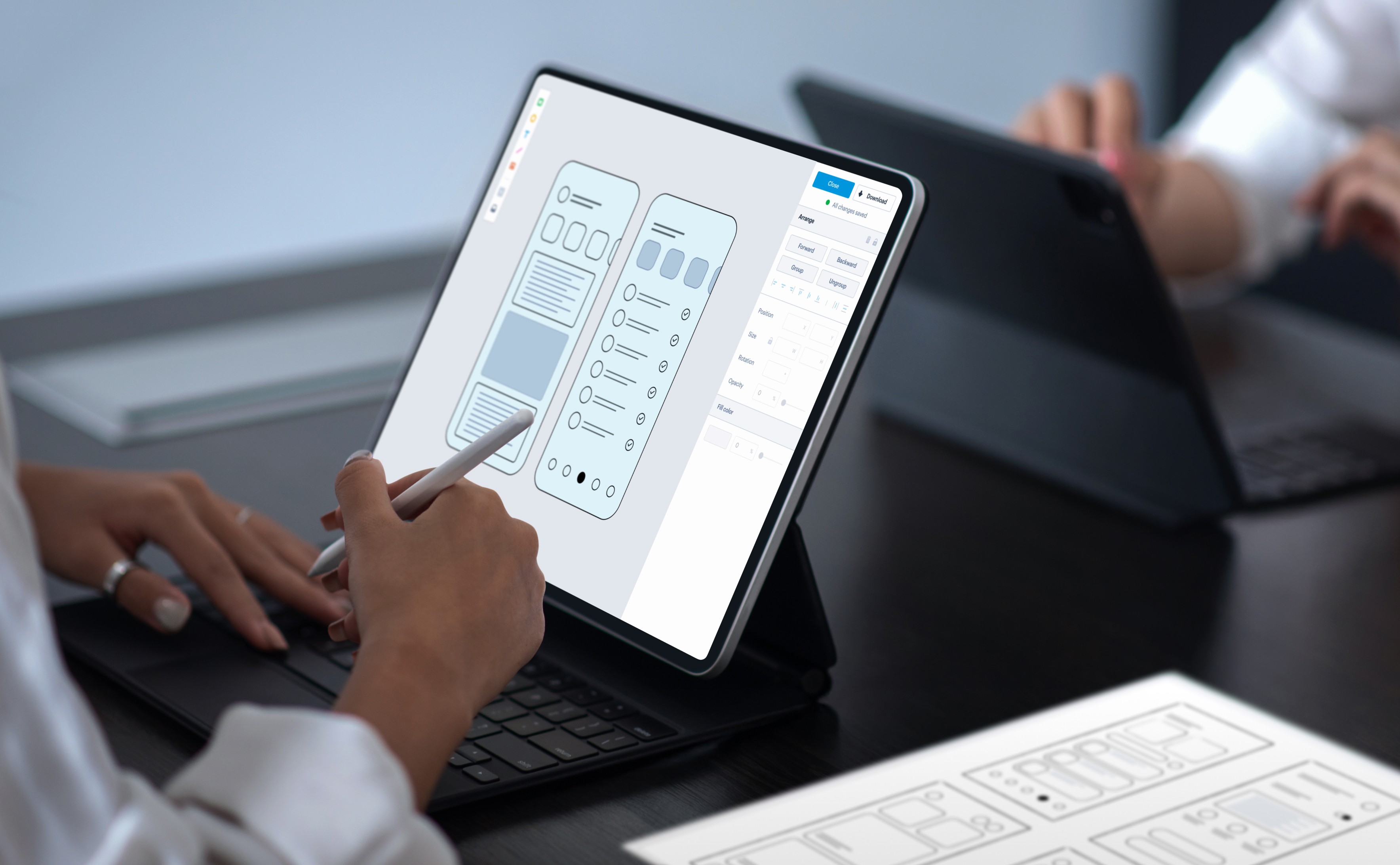Magento Headless Commerce: Everything You Need to Know

- What is Magento Headless & How does it work?
- Difference Between Headless Magento Commerce & Traditional Commerce Architecture
- Benefits of Going Headless with Magento
- Limitations of Headless Magento
- Implementing Headless Magento
- Headless Magento Stores Examples
- Preparing for the Headless Magento Transition
- Bottom Line
- What is Magento Headless & How does it work?
- Difference Between Headless Magento Commerce & Traditional Commerce Architecture
- Benefits of Going Headless with Magento
- Limitations of Headless Magento
- Implementing Headless Magento
- Headless Magento Stores Examples
- Preparing for the Headless Magento Transition
- Bottom Line
In e-commerce, the pace keeps changing, and consistent winners have been adopting advanced and innovative strategies to develop the online shopping experience. Headless commerce Magento is an approach that separates the e-commerce from the front and backend. It offers more flexibility, faster speeds, and better Magento scalability.
This paves the way for increased flexibility, quicker performance, and enhanced Magento scalability. For businesses and e-commerce brands, Magento 2 Headless commerce encompasses faster innovation, improved omnichannel experience & the flexibility to customize the storefront to meet the business requirements. As global e-commerce sales are predicted to hit $9.6 trillion globally by 2027 (Adobe for Business), adopting headless commerce Magento solutions will offer businesses a significant advantage in the digital marketplace.
In the modern world, AI is evolving rapidly and revolutionizing e-commerce trends. Integrating the latest AI technology using the Magento Headless development service helps businesses to refine customer experiences, improve e-commerce operations, and personalise product recommendations for high efficiency.
So, in this article, we will explore what Adobe Commerce headless is, its pros/cons, and how businesses can seamlessly transition into a headless Magento development.
Key Insights
Improved Flexibility: The headless framework of Magento allows the separation of frontend and backend operations.
Better Performance & UX: A headless architecture means faster website performance and a smoother user experience.
Scalability to Grow: As your business grows, Headless Magento solutions scale seamlessly.
Proven Results: Case studies provide evidence of measurable benefits from adopting a headless Magento approach.
Adhere to Best Practices: By adhering to best practices of implementation, you can reap maximum benefits along with an increased return on investment/ROI out of headless Magento.
What is Magento Headless & How does it work?
A headless human has no power. Conventional Magento has similar pitfalls, where the frontend and the backend are tightly coupled, thus causing a lack of flexibility. Magento Headless architecture, on the other hand, “cuts the head” (decouples the frontend from the backend), giving it a more flexible and personalized presentation layer.
Using Magento Headless, you can substitute the conventional frontend with modern technologies like React, Vue.js, Next.js, Remix, and Angular — providing a more dynamic and engaging user experience. In contrast, the traditional Magento frontend relies on older technologies like HTML, CSS, PHTML, and Knockout.js, which may not provide the same level of performance and flexibility.
A headless Magento greatly improves user experience with a fast, responsive, and extremely interactive UI. However, this not only compromises the level of customer experience they could provide but also their scalability and performance, leading to many headless solutions becoming the most preferred choice of e-commerce businesses today. The head(frontend) matters, but the head needs to be replaced and needs to be more powerful and intelligent in dealing with your operations.
You need to work with a Magento development company that excels in implementing a solid headless solution. When compared to the traditional way, headless Magento offers more customization freedom. Beyond that, AI integration in e-commerce has improved significantly. By going headless, you can unlock AI-powered personalized experiences that'll boost user engagement and accelerate business impact.
How It Works
1. Decoupled Architecture: Frontend and backend communicate through APIs (be it GraphQL & REST), allowing independent updates and improvements.
2. Unified Consumer Journey: The same Magento backend can be used for websites, mobile applications, IoT devices, as well as in in-store displays.
3. Custom UX/UI Design: It is no more a limitation for businesses to use the default themes of Magento and create their highly unique storefronts with high performance.
4. Microservices Approach: Each of the services, like the payment process, inventory management, customer support, etc., can run independently, making the system faster and efficient.
Difference Between Headless Magento Commerce & Traditional Commerce Architecture
| Feature | Headless Magento Commerce | Traditional Magento Commerce |
|---|---|---|
| Frontend & Backend | Completely decoupled | Tightly coupled |
| Customization | Fully customizable with modern frameworks | Limited due to Magento’s theme constraints |
| Performance | Faster page loads and better scalability | Dependent on Magento’s built-in features |
| Omnichannel Capability | Seamless integration across multiple platforms | Limited to web stores |
| Development Flexibility | Independent frontend and backend development | Restricted by Magento’s structure |
| SEO & Speed Optimization | Optimized for performance and SEO | May require additional extensions |
Benefits of Going Headless with Magento
1. Higher Flexibility of Customizations
Magento's Headless Architecture allows developers to implement any frontend framework and model the user experience to suit business requirements. You are limited by none of Magento’s traditional themes or templates. The UI can be developed with React, Vue.js, or Angular, and Magento takes care of the e-commerce data on the backend. Both parts communicate through APIs, which allow efficient fetching and displaying of data. This segmentation provides added flexibility and helps in optimizing resources. The frontend can concentrate on the user experience, while the backend streamlines e-commerce data processing.
2. Enhanced Performance
By removing unnecessary code, loading the stylesheets, jQuery, and leveraging modern frontend frameworks, headless Magento can greatly improve page load speeds that directly affect SEO and customer retention. Decoupling the front and backends lets you fine-tune each layer on its own for better performance. This means you can use lightweight frontend frameworks and technologies that load web pages quickly, making browsing smoother and more fluid - simply like having super speedy hover qualities on a website. Headless Magento 2 Commerce enables the implementation of advanced performance optimization techniques, such as:
- On-Demand Loading: The process defers the loading of less important resources until they are necessary. It helps pages load faster and makes the experience much better for users.
- Code splitting: The process breaks down the application code into smaller, manageable chunks that are loaded on demand. It loads less code at the start and helps the whole thing run smoother.
- Pre-Rendering: The process renders web pages on the server instead of the client's browser. It means faster loading pages, better search rankings for SEO, and a smooth user experience.
3. Omnichannel Experience
A single Magento backend can power multiple storefronts, mobile apps, POS systems, and smart devices, ensuring a seamless shopping experience across all touchpoints.
Ready to create an eCommerce site with omnichannel capabilities?
Let's talkLoading...
4. Improved Scalability
Headless Magento can easily accommodate traffic spikes during peak seasons, thanks to its modular architecture and cloud deployment options.
5. API-First Approach
Magento’s GraphQL and REST APIs enable seamless integration with third-party apps, CRM, ERP, and PIM systems.
6. Improved Search Engine Optimization
Headless Magento allows developers to implement SEO best practices more effectively using server-side rendering (SSR) and progressive web apps (PWA).
7. Ease of Storefront Development
Developers can use technologies such as React.js, Vue.js, and Next.js, which provide better development efficiency and a more engaging UI/UX.
8. Future-Ready Architecture
Headless architecture can future-proof your e-commerce platform. It becomes easier to adjust to these emerging technologies and trends. You can:
- Adopt new frontend frameworks
- Apply modern functioning
- Connected with third-party services
- It unshackles you from being stuck on Magento's native frontend stack.
9. Enhanced Developer Efficiency
Developer productivity is one of the benefits of headless architecture. It enables frontend and backend teams to develop on their own while also working in parallel. Frontend developers focused on creating rich UI experiences.
Backend developers can concentrate on implementing business logic and data management functionalities.
Using this parallel development approach, we increase the speed of delivery and increase iteration and experimentation.
Limitations of Headless Magento
1. High Upfront Cost
Developing a headless solution requires significant investment in custom frontend development, API integration, and hosting infrastructure.
2. Increased Development Complexity
Since Magento Headless Commerce requires expertise in both backend (PHP, Magento) and frontend (React, Vue.js, Angular), businesses need skilled developers to maintain the architecture.
3. Customization and Extensibility
While headless commerce offers customization freedom, businesses may face challenges integrating some third-party Magento extensions as they are designed for traditional themes.
4. Vendor Lock-in
Some third-party services (e.g., headless CMS providers) may create dependencies, making it difficult to switch platforms in the future.
5. Resource Requirements
A headless setup demands additional hosting, security, and maintenance resources compared to a traditional Magento store.
Implementing Headless Magento
1. Use a PWA (Progressive Web App)
Progressive Web Apps such as Magento PWA Studio or third-party solutions like React Storefront offer a ready-to-use framework for headless Magento stores.
Remix is also a React-based framework that enhances performance and efficiency, making it a strong choice for headless PWA development with Magento 2.
2. Integrate a Headless CMS with Magento
Using a Headless CMS (like Contentful or Strapi), businesses can manage their content in one central place, pushing it out with APIs to multiple platforms, enabling greater flexibility and improving how content reaches customers.
3. Go for Full-Headless Architecture
For enterprise solutions, businesses may opt for a microservices-based approach, where different components (checkout, payments, inventory) operate independently.
Headless Magento Stores Examples
1. Jumbosouq

Magento's Headless PWA in Next.js is operational at Jumbo Souq, Qatar’s first exclusive eCommerce site for electronics and home appliances. The client’s goal was to design an e-commerce website and an application that are both user-friendly and highly functional. After engaging with WAC, they were able to increase sales and brand visibility through a digital platform built to their specifications.
Combining Magento’s backend with GraphQL enhances flexibility and customizability within Next.js applications. With this configuration, a website can operate at peak efficiency, mobile applications function quickly, and users are highly pleased. An additional essential feature is WAC Search with the Webandcrafts team, which offers lightning-fast product searches with any phrase provided.
Website speed and performance optimization in Next.js is done via server-side rendering (SSR), static site generation (SSG), and incremental static regeneration (ISR). These methods, as well as pre-rendering content, optimizing images, and strategic data retrieval, enable faster page loads. At Jumbo Souq, Next.js assures quick page loads, an exceptional shopping experience, and optimal SEO. Moreover, quick data retrieval through the integration of Magento’s GraphQL API enhances the website and application's performance exponentially.
2. Bfab

Bfab used Next.js PWA to build a modern e-commerce site with Magento 2 Headless Commerce. Their solution provided the best page speed, seamless shopping experience on all devices, and convenient administration of 24 stores and more than 100,000 products managed on the backend of Magento and frontend of PWA on the Magento and PWA platforms, respectively.
While Bfab worked toward being a household name, they also started to pursue recognition from top technology, business, beauty, and fashion publications. For establishing global brand recognition, they turned to Webandcrafts, who helped formulate a strong, safe, and captivating eCommerce site which was aimed at improving brand recognition and enhancing the user experience.
The Webandcrafts team successfully crafted an appealing and uncomplicated Magento 2 UI/UX shopping experience. The use of Next.js integrated with the backend of Magento 2 enhanced the site’s performance, scalability, and flexibility, which in turn increased the overall efficiency of the web platform.
3. Techno Blue

Techno Blue Electronyat is one of Qatar’s largest retailers of electronics and appliances, partnered with Webandcrafts, and implemented the Magento 2 Headless Commerce with Next.js PWA and Flutter to give ‘Techno Blue’ a digital platform that performs to the highest standards.
The speed of page loads, ease of navigation, and an effortless shopping experience with browsing are guaranteed by the Magento 2 headless architecture integrated with Next.js PWA. Moreover, user engagement is increased further with the mobile app supporting Flutter on both iOS and Android devices as it delivers a native, high-performing application.
Preparing for the Headless Magento Transition
1. Strategy
A clear roadmap is essential before transitioning to Magento 2 Headless Commerce. Businesses should assess their long-term needs, budget, and technical resources.
Key Considerations:
- Business Objectives: Specify the core drivers for the transition to headless, such as improved performance, UX, or omnichannel capabilities.
- Budget Planning: Evaluate the development, hosting, third-party tools, and maintenance costs.
- Technical Resources: Ascertain whether you have in-house expertise or whether you need external Magento-certified developers.
- Scalability Needs: Future-proof the architecture by anticipating growth in traffic, performance, and additional features.
- Customer experience: Follow the transition by improving usability with faster load times.
2. Developers
Hiring experienced Magento developers and frontend engineers skilled in React, Remix, Next.js, Vue.js, and GraphQL is crucial for a successful implementation.
Key Roles & Required Skills:
Magento Backend Developers:
- Expertise in Magento 2 architecture (GraphQL, REST API, caching strategies)
- Experience in custom module development & third-party integrations
- Strong knowledge of PHP, MySQL, and cloud-based hosting solutions
Frontend Developers:
- Proficiency in modern JavaScript frameworks like React.js, Next.js, Vue.js, and Remix
- Experience with Magento PWA Studio for Progressive Web App development
- Knowledge of GraphQL API for seamless communication with Magento’s backend
DevOps Engineers:
- Experience in CI/CD pipelines for faster deployments
- Strong understanding of cloud hosting & scalability (AWS, Azure, GCP)
QA & Testing Team:
- Perform rigorous testing for performance, security, and UX optimization
- Ensure compatibility across devices, browsers, and platforms
3. Third-Party Integrations
Ensure compatibility with existing payment gateways, CRM, ERP, and shipping solutions to maintain seamless business operations.
Bottom Line
Magento Headless Commerce offers a new way for businesses to modernise and move forward with their e-commerce infrastructure. This decoupled approach enables businesses to achieve a higher level of flexibility, enhanced performance, and a unified omnichannel experience.
The transition takes careful planning, a skilled development team, and a substantial investment. A reliable Magento development agency can help in reducing these risks, performing the migration in the right way.
At Webandcrafts (WAC), we specialize in Magento development Services and provide tailored solutions to help businesses scale. Contact us today to explore how Magento Headless Commerce can transform your online store!
Thinking of switching from traditional Magento to headless?
Reach out to usLoading...
- Complete Guide to Magento (Adobe Commerce) eCommerce Platform
- Top 10 Magento Websites: Best eCommerce Websites Using Magento (Adobe Commerce)
- Adobe Commerce vs Commercetools: Choosing the Right eCommerce Platform for Scalable Success
- Magento Alternatives: 8 Powerful Competitors for Scalable, Modern E-Commerce Solutions
- Magento 2 Inventory Management: Key Insights
Discover Digital Transformation
Please feel free to share your thoughts and we can discuss it over a cup of tea.









